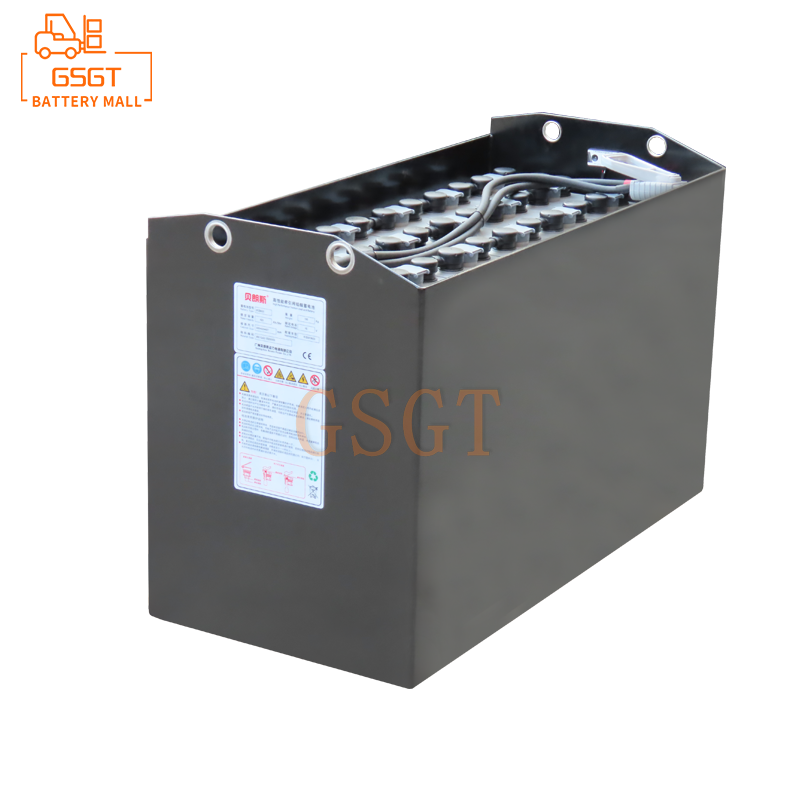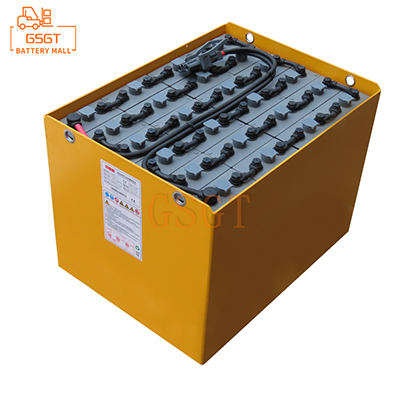Time:2025-05-08 10:24:21
Browse:609
Abstract
This article elaborates in detail on the significance of performance testing for forklift lead-acid batteries, deeply explores various performance testing methods, including capacity testing, charge and discharge performance testing, cycle life testing, internal resistance testing, etc., and analyzes the specific requirements and application scenarios of the testing standards. It aims to provide a comprehensive and accurate reference for the performance evaluation of forklift lead-acid batteries, promote the standardization and normalization of battery performance testing in the industry, and enhance the quality and reliability of forklift lead-acid batteries.
1. Introduction
Forklifts, as indispensable handling equipment in logistics, warehousing and other fields, mainly rely on lead-acid batteries for power. The performance of lead-acid batteries directly affects the working efficiency, endurance and service life of forklifts. Accurately evaluating the performance of lead-acid batteries in forklifts is of great significance for ensuring the normal operation of forklifts, reducing operating costs and enhancing safety. Therefore, it is of vital importance to conduct in-depth research on the performance testing methods and standards of forklift lead-acid batteries.
2. The Importance of Performance Testing for Lead-Acid Batteries in Forklifts
1. ** Ensuring the normal operation of forklifts ** : Forklifts need to frequently perform handling operations in their daily work, and thus have a high requirement for the continuous power supply capacity of the battery. Through performance testing, problems with the battery can be detected in a timely manner, such as insufficient capacity and decreased charging and discharging performance, to prevent forklifts from stopping due to battery failure and thus ensure the continuity of logistics operations.
2. ** Optimize operating costs ** : Poorly performing batteries not only increase the number of charges and charging time, but may also shorten their service life and increase replacement costs. Accurate performance testing can help enterprises rationally arrange the use and maintenance of batteries, improve their utilization efficiency and reduce overall operating costs.
3. ** Enhance Safety ** : During the use of lead-acid batteries, if their performance is unstable, safety hazards such as overheating, leakage, and even explosion may occur. Through performance testing, potential safety issues can be identified in a timely manner, and corresponding measures can be taken to prevent and handle them, ensuring the safety of workers' lives and the property of the enterprise.
3. Performance Testing Methods for Forklift Lead-Acid Batteries
(1) Capacity Test
1. ** Test Principle ** : The capacity of a battery refers to the amount of electricity it can release under specified discharge conditions, usually expressed in ampere-hours (Ah). The testing principle is to completely discharge the battery under certain discharge current and temperature conditions, record the discharge time, and then calculate the capacity of the battery based on the discharge current and time.
2. ** Test Method **
First, fully charge the battery and let it stand for a period of time to ensure that the electrolyte inside the battery is fully and evenly distributed.
Then, perform constant current discharge according to the specified discharge current, and record the terminal voltage of the battery at regular intervals.
When the terminal voltage of the battery drops to the specified terminal voltage, stop discharging and record the discharge time.
Finally, calculate the capacity of the battery.
3. ** Influencing Factors ** : The capacity test results are affected by factors such as discharge current, temperature, and electrolyte density. Generally speaking, the greater the discharge current, the smaller the actual capacity that can be discharged. When the temperature drops, the capacity will also decrease. Both too low and too high electrolyte density can affect the chemical reactions of the battery, thereby influencing its capacity.
(2) Charging and Discharging Performance Test
1. **Charging Performance Test**
- ** Test Principle ** : Evaluate the battery's ability to accept electrical energy under different charging conditions, mainly including charging efficiency, charging time and other indicators.
- ** Test Method ** : The battery is charged by constant current charging, constant voltage charging or staged charging, etc. The parameters such as charging current, voltage, battery quantity and charging time during the charging process are recorded. By analyzing these parameters, the charging performance of the battery is evaluated, such as whether the charging efficiency meets the design requirements and whether the charging time complies with the standards, etc.
2. **Discharge Performance Test**
- ** Test Principle ** : To examine the voltage changes and capacity release of the battery during the discharge process, in order to understand its actual working performance.
- ** Test Method ** : Conduct discharge tests on the battery under different load conditions, and record data such as the terminal voltage, discharge current, discharge time, and discharged electricity of the battery during the discharge process. Analyze these data to evaluate the discharge performance of the battery, such as whether the discharge voltage is stable under specific loads and whether it can meet the working requirements of forklifts, etc.
(3) Cycle Life test
1. ** Test Principle ** : Cycle life refers to the number of charge and discharge cycles that a battery can achieve a specified capacity retention rate under specified charge and discharge conditions. The durability and reliability of the battery can be evaluated through cycle life testing.
2. ** Test Method ** : The battery is charged and discharged in a cycle according to the prescribed charge and discharge system, with each cycle including both the charging and discharging processes. During the cycling process, measure the capacity of the battery regularly and record the number of cycles. When the capacity of the battery drops to a certain proportion of its initial capacity (such as 80%), stop the test. The number of cycles at this time is the cycle life of the battery.
3. ** Precautions ** : The cycle life test takes a relatively long time. It is necessary to strictly control the current, voltage, temperature and other conditions during charging and discharging to ensure the accuracy and comparability of the test results. At the same time, the density and liquid level of the electrolyte should be checked regularly, and distilled water or electrolyte should be replenished in time.
(4) Internal Resistance Test
1. ** Test Principle ** : The internal resistance of a battery reflects the magnitude of the internal resistance within the battery, including ohmic internal resistance and polarization internal resistance. The magnitude of internal resistance directly affects the charging and discharging performance and output power of the battery. By measuring the internal resistance, the health status of the battery can be quickly determined. Generally speaking, an increase in internal resistance indicates that the electrodes, electrolyte and other components inside the battery have aged or been damaged.
2. ** Test Method **
- ** DC Discharge method ** : By performing a momentary high-current discharge on the battery, measuring the voltage change before and after the discharge, and calculating the internal resistance of the battery based on Ohm's Law. The test results of this method are relatively accurate, but it causes certain damage to the battery.
- ** AC Impedance method ** : Inject a small-amplitude AC signal into the battery, measure the battery's response to the AC signal, and calculate the battery's internal resistance by analyzing the AC impedance spectrum. The AC impedance method has a fast testing speed and does no damage to the battery. It is currently a commonly used internal resistance testing method.
4. Conclusion
The performance testing methods and standards for lead-acid batteries in forklifts are crucial for accurately evaluating battery performance, ensuring the normal operation of forklifts, optimizing operating costs and enhancing safety. Through various testing methods such as capacity testing, charge and discharge performance testing, cycle life testing, and internal resistance testing, a comprehensive understanding of the performance indicators of the battery can be achieved. Meanwhile, relevant standards at home and abroad provide unified norms and requirements for performance testing, ensuring the accuracy and comparability of the test results. In practical applications, enterprises and testing institutions should strictly conduct tests in accordance with standard requirements, continuously improve testing methods, and enhance testing levels to promote the healthy development of the forklift lead-acid battery industry and provide more reliable power support for fields such as logistics and warehousing. In the future, with the continuous advancement of technology, the performance testing methods and standards for forklift lead-acid batteries will also be constantly updated and improved to meet the demands of industry development.

$2450

$3405

$5710

$5710

MESSAGE
Professional And Efficient
Security
Affordable Price
Professional Services